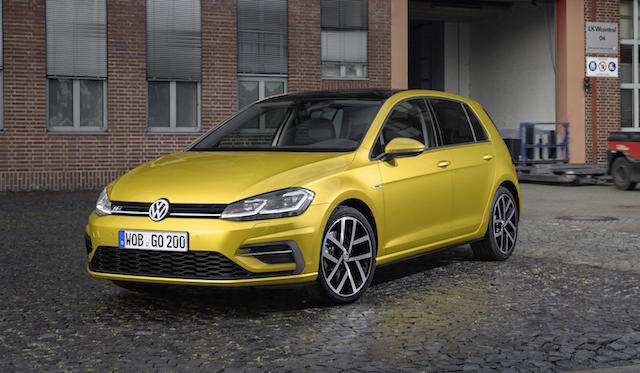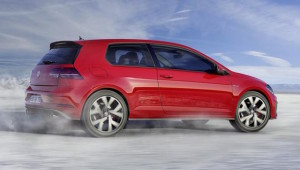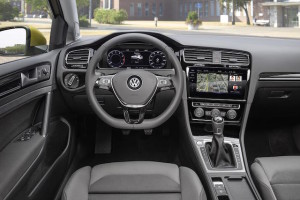
Volkswagen has introduced new engine technology on the facelifted Golf range, along with giving the existing 2.0-litre turbocharged unit in the GTi a further boost in power. But it isn’t known if one of the above will be available in New Zealand when the range lands around the middle of next year.
The entry-level 1.4-litre unit current available here will be replaced by a 1.5-litre engine that delivers more power, uses less fuel, and emits fewer CO2 emissions. The engine in the GTi has been tweaked to deliver an extra 7kW – 169kW on the standard model and 180kW on the Performance.
 The new 1.5-litre gets Miller cycle technology and a turbocharger equipped with a variable-geometry turbine. The engine can idle two of its four cylinders on light throttle loads to save fuel – but it’s not yet known if it will be available here.
The new 1.5-litre gets Miller cycle technology and a turbocharger equipped with a variable-geometry turbine. The engine can idle two of its four cylinders on light throttle loads to save fuel – but it’s not yet known if it will be available here.
“We have had the technology (Active Cylinder Management) available on cars before, but we couldn’t get it for this market,” said Volkswagen NZ general manager Tom Ruddenklau. “If it’s available to us on the Golf, we will certainly take it.”
The so-called ‘TSI Evo’ engine comes in two states of tune, one delivering 110kW/250Nm at 1500rpm and a BlueMotion-badged variant putting out 96kW/200Nm at 1400rpm The fuel-saving processes of both differ.
The 110kW model idles two cylinders to save fuel; the 96kW variant uses a coasting function that shuts down the engine on a trailing throttle. VW claims town-and-around fuel use of 4.9 litres/100km (57mpg) for the 110kW Golf, and 4.6-litres/100km (61mpg) for the 96kW model. Respective CO2 emissions are 110gr/km and 104gr/km.
 The new engine uses a combustion process based on the Miller cycle, where the intake valve remains open longer than on a regular Otto-cycle unit to allow the turbocharger to keep the air/fuel mix flowing into the combustion chamber. The 2.0-litre engine in the new Audi A4 uses the same technology.
The new engine uses a combustion process based on the Miller cycle, where the intake valve remains open longer than on a regular Otto-cycle unit to allow the turbocharger to keep the air/fuel mix flowing into the combustion chamber. The 2.0-litre engine in the new Audi A4 uses the same technology.
As expected, the look of the seventh-generation Golf hasn’t changed much – it’s already been dubbed ‘Golf 7.5’. There are tweaks to the front-end design, with the option of LED headlights and different air intakes in the lower bumper. At the rear, every Golf will now get LED tail-lights as standard, and higher-end editions will feature animated ‘flowing’ indicators.
Inside, there are new patterns on seats, along with new materials in the dashboard, door panels and centre console. Infotainment systems have been upgraded, in particular the option of ‘Active Info Display’, the same digital instrument panel used on Audis and VW’s Passat.
The resolution on the dashboard screen is said to be double that of the current car. The premium Discover Pro system makes available voice commands and gesture control for key functions.
Other connectivity upgrades include a wireless charging facility for compatible smartphones, an interface that allows phones and tablets to connect to the car from the rear seats, for example, and new apps that sit alongside Apple CarPlay and Android Auto.

